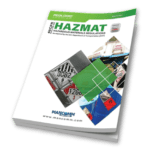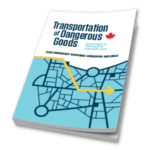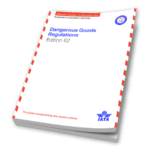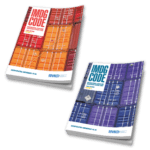This post was originally published in April 2018 and has been updated in November 2020 for accuracy.
IATA, IMO, 49 CFR, & TDG Documentation
No one wants to talk about their weight. Ever. In the world of transport though, you have no choice. You are required to list on your transport paperwork some sort of weight, mass, or volume. The trick is to know which regulation requires what. Should be the net weight or gross weight? Is it per package or per packaging? Sadly, depending on the regulation, the answers to those questions may differ.
Before getting started, be sure you understand what all of those terms mean. I tend to default to the IATA regulations when it comes to definitions. These are found in Appendix A. Take note that these terms are also defined in the other regulations, too. In 49 CFR check in §171.9. For IMDG they are in 2 places – Volume 1, Chapter 1.2 and Volume 2, Appendix B. TDG defines them Part 1.4.
Definitions:
- Package
- The complete product of the packing operation consisting of the packaging and the contents prepared for transport.
- Packaging
- A receptacle and any other components or materials necessary for the receptacle to perform its containment function in conformance with the minimum packing requirements.
- Means of containment
- (in TDG) a container or packaging or any part of a means of transport that is or may be used to contain goods.
- Means of transport
- (in TDG) a road or railway vehicle, aircraft, vessel, pipeline or any other contrivance that is or may be used to transport persons or goods
- Net quantity (or weight)
- The weight or volume of the dangerous goods contained in a package excluding the weight or volume of any packaging material; or the weight of an unpackaged article of dangerous goods (e.g. UN3166).
- Gross weight (or gross mass)
- The weight of a packaging plus the weight of its contents.
Now that we know or remember those specific terms, let’s see what each regulation has to say in regards to the paperwork. These are known as shipper’s declarations, dangerous goods form, shipping papers, or a transport document.
IATA – Section 8 Documentation:
For this regulation, a shipper needs to review §8.1.6.9.2. In particular, Step 6 paragraph (a) provides the information we need for our shipper’s declaration. You are required to list the net quantity of dangerous goods in each package (by volume or weight as appropriate) for each item of dangerous goods that has a different UN/ID number, shipping name or packing group along with the appropriate units of measure. Since this is an international regulation, those units must be in metric.
IATA does one step further. Certain entries of the Dangerous Goods List in the column for the maximum net quantity per package there will be the inclusion of the “G”. For example, look at ID8000 for Consumer Commodity or certain limited quantity listings. This “G” indicates the shipper must give the gross weight of each package. To avoid confusion for the carriers this “G” must also be included after the unit of measure.
IMDG – Chapter 5.4
Under IMDG, the weight description needed is in §5.4.1.5.1. Here it says, the total quantity of dangerous goods covered by the description (by volume or mass as appropriate) for each item bearing a different proper shipping name, UN number or packing group shall be included. At the end of that section is the notation to specific the unit of measure and that abbreviations for those may be used. Again, this is an international regulation, so the units must be metric.
Take note, the use of the word “shall” is a mandatory requirement.
49 CFR – §172.200 Subpart C for Shipping Papers:
In 49 CFR, or as most of us call it DOT, a shipper needs to read §172.202 paragraph (a) subparagraph (5) closely. Here you see the total quantity of the hazardous materials must be indicated (by mass or volume) and it must include an indication of the applicable unit of measure on a shipping paper. Interestingly enough, §171.10 says the unit of measure is to be compatible with international standards which is metric.
49 CFR lists the “customary” units in parentheses throughout but they are not the regulatory standard. We all know the US has yet to convert fully to the metric system. However, it is a good idea to make the changeover now when it comes to our hazardous materials’ shipping papers.
TDG – Part 3 Documentation:
Here a consignor (shipper) is in a unique situation. Section 3.5 (1)(d) simply tells a consignor that for each shipping name, the quantity of dangerous goods and the unit of measure used to express the quantity must be on a shipping document. It does go on to say the units used must be metric. There is not a differentiation between net and gross mass for Canadian transport.
Keeping all of these requirements straight as a shipper making shipments via ground, air, ocean and between the US and Canada can be difficult. Notice I’ve included nothing about how explosives should be listed. They have their own set of rules in each regulation. Hopefully, this blog will clarify one part of your role as a shipper. If you ever have questions or find your self in need of training, reach to us today.
Stay up to date and sign up for our newsletter!
We have all the products, services and training you need to ensure your staff is properly trained and informed.
 US 49 CFR Publications |
 Canadian TDG Publications |
 IATA Publications |
 IMDG Publications |







 ICC USA
ICC USA ICC Canada
ICC Canada